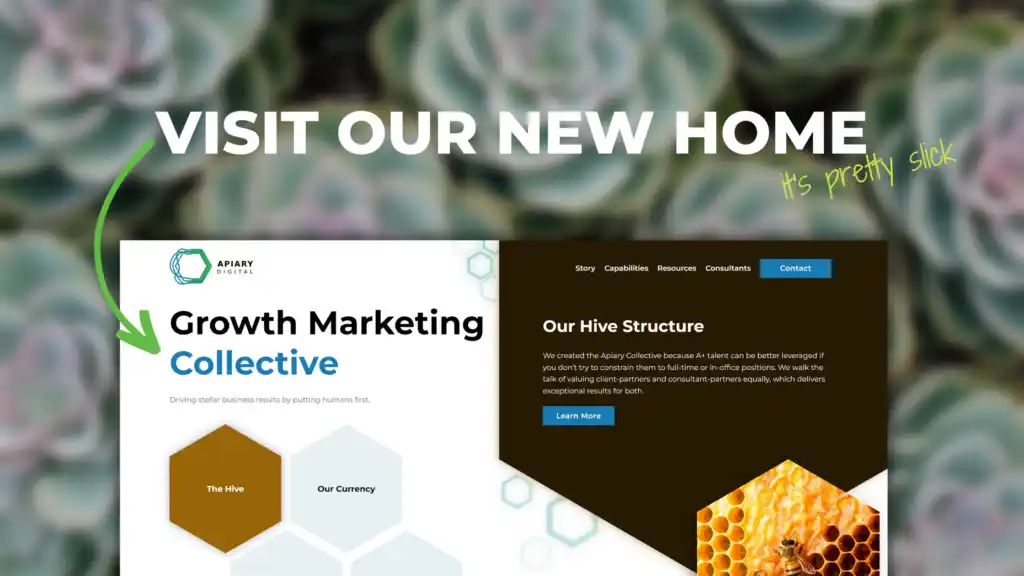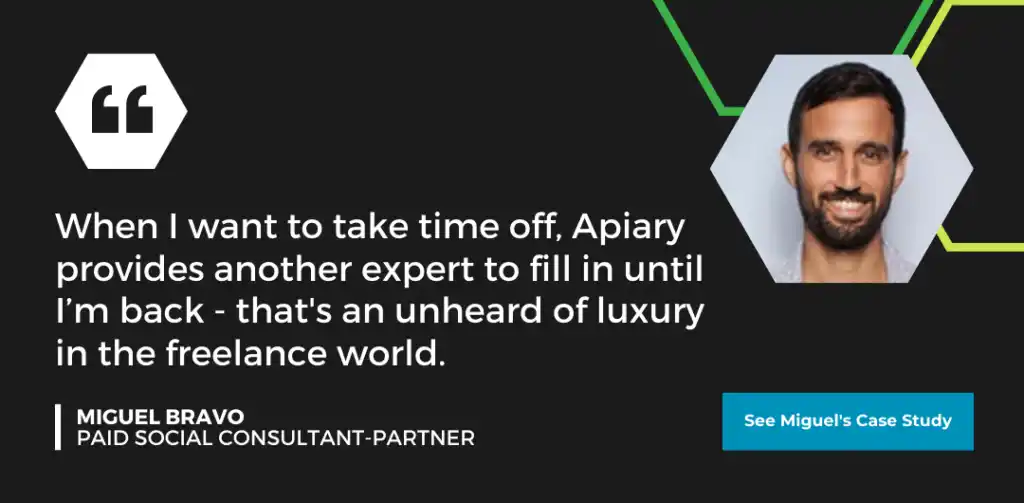Many companies rebrand after a merger, acquisition, or scandal fundamentally shifts the company’s DNA. But rebranding doesn’t mean that you’ve drastically changed who you are.
For Apiary, we rebranded for three reasons:
- Our first decade of client growth leaned heavily on the extensive network of our founder, Karen Amundson. Our website wasn’t doing the heavy lifting – not driving new business, not expanding our network, and not an active component of how we deliver services to our clients – so was a nuanced discussion about ApiaryDigital.com a top priority? Nope. (Remember this when you get to Takeaway #5 below.)
- For similar reasons, the site didn’t accurately reflect the consultant-partner experience, which made it difficult for current talent to refer us to their colleagues.
- Because we didn’t have an intentional content/SEO strategy (bullet #1 above), none of our site content was ranking. But organic search should be part of every sustainable growth strategy, so…
Shortly after our CEO, Tee Coletti Kaiser, joined us in July 2021, our journey began. There were many stops and starts along the way, but if we had to narrow it down to the most impactful choices we made, we’d point to these five:
1. Start with an SEO-based site architecture.
And then massage it.
Our SEO strategists did a comprehensive audit of our previous site, poked around our Google Search Console, aligned with our Leadership team on performance goals, and then conducted extensive keyword research.
Based solely on the goal of a highly optimized and lead-generating site, the first version of our new site architecture was born.
However…
Although search is one of the pillars of our expertise, there are times when an SEO performance optimization recommendation will conflict with brand/marketing goals. We hate to admit it, but yes, it happens. All the time.
The vast majority of the SEO recommendations our consultant-partners provided are live on the site you’re looking at right now, but not all. We chose not to implement two of their architecture and tactical implementation recommendations.
SEO exists to serve the interests of your brand, not paint the brand into a corner.
Our general rule in this arena: Follow at least 85-95% of what the SEO experts suggest, and be open to skipping recommendations that don’t adequately meet marketing/sales pipeline needs.
But when it comes to your 301 redirect strategy (this is easy to get wrong and can have huge implications for how Google indexes your site), do everything the experts say!
And then check to make sure you did it right. And then check again.
2. Brand voice and narrative drive visuals,
not the other way around.
Almost every blog post about rebranding has words like ‘font’ and ‘logo’ in the first paragraph. But during our most recent rebranding, our logo and color palette didn’t change. At all.
Similarly, the essentials of our business model and service structure remain unchanged. What changed A LOT was how we communicate who Apiary is and why we exist.
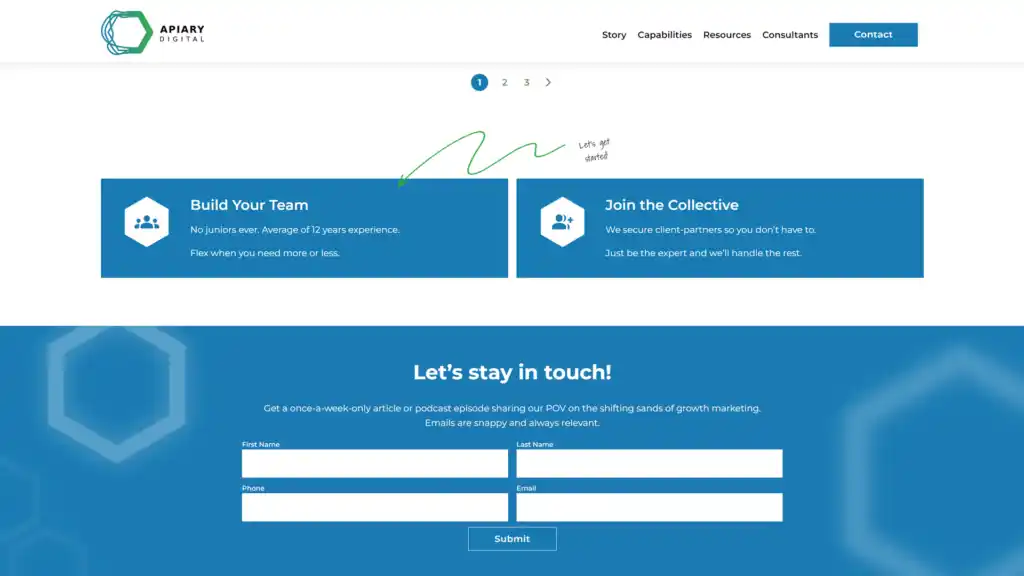


In today’s climate, the largest consumer segment is looking for brands that share their values. Visuals help to convey that, but visuals take their cue from the deeper story that you’re telling about who you are.
So how do you land at what needs to be said and how? That leads us to #3…
3. Stakeholder interviews are not a cumbersome task –
they produce GOLD.
If the opinions of 47 people are all weighted equally, you’ll a) quickly discover that the word “rebranding” is code for death by a thousand email threads, and b) notice that your site launch date keeps drifting off into the horizon.
Here’s how we made stakeholder interviews work really well for our rebranding experience:
Other than our CEO and Founder, we focused first on stakeholder groups instead of individuals. The core groups we identified were:
- Consultant-partners
- Client-partners
- Internal leadership team
- External board of directors
Within each of those groups, we selected 1-3 people. Some completed detailed written questionnaires, some did a recorded Q&A with our CEO, and others did a 60-minute interview with our narrative strategist.
Recurring themes and patterns from all these interviews were condensed into our overarching Narrative Foundation.
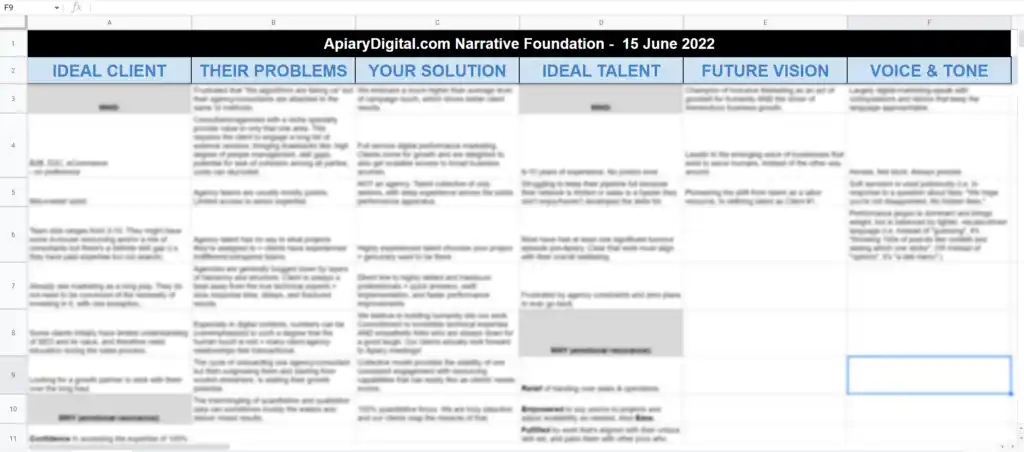
That beautiful spreadsheet (Notice that it’s only 5 columns and 14 rows? Concise. Clear.) was the basis of every syllable you see on the new ApiaryDigital.com.
*sigh* We love you, stakeholder interviews!
One more thing about stakeholder interviews in a rebranding project:
No matter how thorough your brand documentation might be, details inevitably fall through the cracks.
A diverse collection of stakeholder interviews increases the likelihood that small bits of useful context are factored into the rebranding process.
For example, our copywriter was a newer member of the Hive who didn’t fully understand our vacation coverage policy. But then, in one of the stakeholder interviews, this came forward:
Our vacation policy is unusual. Many contractors are familiar with the experience of losing a project entirely if they want to take time off. That doesn’t happen with Apiary.
Our talent bench offers vacation coverage so that client-partner projects experience no downtime whenever a consultant-partner needs to step away for a bit.
So, umm… This is a BIG deal.
Certainly for clients, but especially for independent contractors who are considering joining our Hive. Without a comprehensive set of stakeholder interviews, that detail might have been missed on the new site.
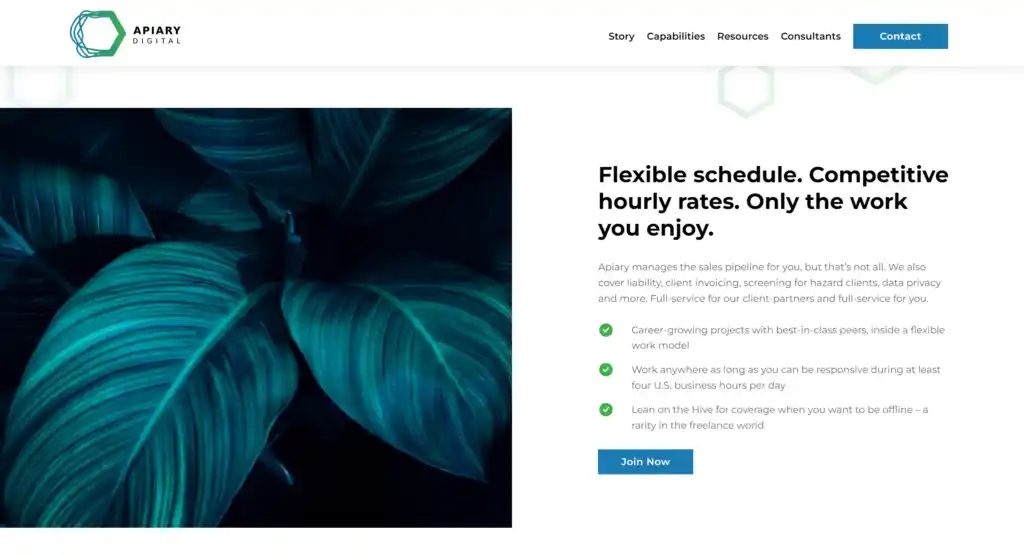
In addition, stakeholder interviews revealed that several client-partners and consultant-partners define Apiary as an agency.
We’re decidedly NOT an agency, which highlighted a need for additional education on our model and how it differs from conventional agencies. The interviews revealed several other opportunities for internal and web content upgrades we will be making down the road.
4. Don’t let focus fatigue derail your rollout timeline.
Our rebranding journey lasted almost two years. The core team spent anywhere from 6-18 months looking and thinking about the Apiary website every single week. That’s hundreds of hours of brain power focused on this one project.
The upside of long project timelines is that you have the spaciousness to navigate the process with intentionality. However…
Long project timelines can lead to focus fatigue, and the resulting urge to work on something new can reduce or diminish your rollout timeline.
Your UX team is jonesin’ to pitch you the next round of optimizations. And Creative has spent the past 2 years producing dozens or even hundreds of pieces of collateral based on this one color palette, so they’re ready to shift into evolving the brand aesthetic. Totally understandable.
BUT.
Your audience has only just seen this new web property. Remember them? The people you did all this for.
For the audience, this rebranded experience still has a new car smell. They need time to adjust to these changes, which will help them understand you better, and that was the whole point of rebranding. Don’t rush past that.
The website launch date is not the finish line. Completing your rollout plan is the finish line. (For now.)
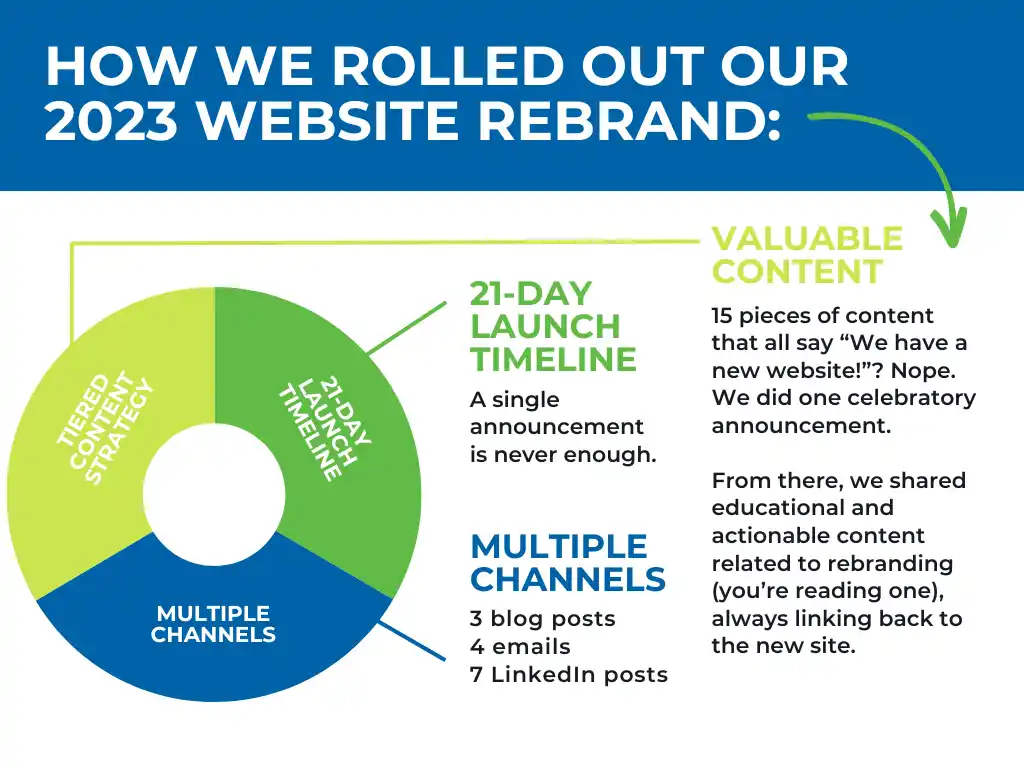
The enthusiasm your team might feel for diving into another site update is so human, but it’s also often not the most strategic use of resources.
We asked our savvy consultant-partners to make note of all the improvement opportunities they saw, and to hold onto those for a beat.
Are we going to review those recommendations and then optimize the site even further? Without a doubt. Is that a priority right now? It’s not.
And that’s a lovely segue into Rebranding Takeaway #5…
5. Wait a second, do you even need to rebrand?
After all that, you were amped to email your team about setting a rebranding meeting, right? Pump the brakes for a second.
Rebranding requires diverting a significant amount of your team’s time and comes with a hefty price tag (our total rebranding budget more than TRIPLED by the end). It’s not a decision to be made lightly.
- Do you need a full rebrand, or a lighter visual refresh?
- Do you need a full rebrand, or focused UX/UI improvements on the handful of core pages that your sales team relies on, or could?
- Do you need a full rebrand, or are you bored of your site and therefore assuming your customers are, too?
- Do you need a full rebrand, or to optimize your perfectly-fine site to align with strategic organic and paid search efforts?
- Do you need a full rebrand, or is expanding your growth strategy on LinkedIn a better use of your resources?
In our humble opinion, many teams jump prematurely into rebranding because it’s a flashier option that leads to a tangible visual we can point to and say, “Look! Big accomplishment!”
It was no accident that we’ve mostly had the same website for over 8 years. We were focused on growing our pipeline, expanding our talent bench, and evolving the internal systems that underpin our ability to deliver client-partner results and consultant-partner satisfaction.
If your team is rushing toward a rebrand, we suggest taking a beat to reassess.
And then maybe reassess again.
If you’ve got more detailed questions about our rebranding journey, we’re a pretty transparent bunch, so feel free to ping us with any questions.
Otherwise, go poke around the revamped ApiaryDigital.com. Websites are constantly growing, but for now, we’re pretty pleased with where we landed and deeply grateful to the core team who helped us get there. Come take a look!
